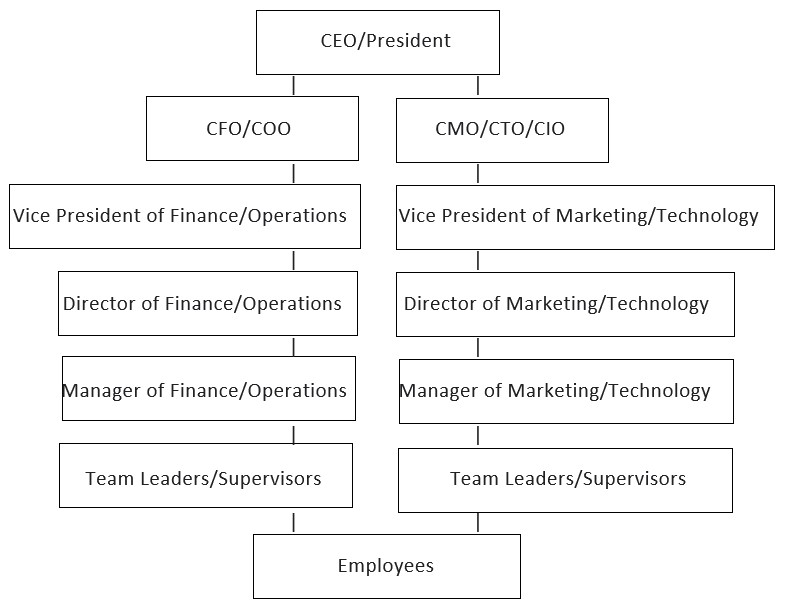Organizational charts and the chain of command are crucial tools for defining structure and hierarchy in any business. They serve as visual representations of the relationships between various roles, departments, and employees within an organization. By clearly outlining who reports to whom, organizational charts help clarify decision-making processes, responsibilities, and communication flows. For businesses, understanding and implementing an effective chain of command is essential for achieving efficiency and operational success.
Organizational charts map out the formal structure of a company. They show the hierarchy from top executives to entry-level employees and provide clarity on each role’s responsibilities. The chain of command ensures that communication flows smoothly from one level to the next, which minimizes confusion and miscommunication. Without a well-defined chain of command, employees might bypass proper channels, leading to decision-making delays, unclear instructions, or overlapping responsibilities. In businesses of all sizes, organizational charts are an essential component for maintaining order and ensuring efficient communication.
Importance of Organizational Charts and the Chain of Command
Organizational charts and the chain of command hold immense importance in structuring a business effectively. These tools provide clarity on roles, responsibilities, and decision-making authority within an organization, ensuring smooth communication and operational efficiency. By visually representing the company’s structure, these charts offer employees a clear understanding of their roles and the relationships between different departments. The chain of command helps employees know who they should report to, and who has decision-making authority over them. This reduces confusion and creates a more organized, cohesive work environment.
A clear chain of command also supports accountability. When roles and responsibilities are clearly defined, it’s easier to track performance, manage workloads, and ensure that all employees are contributing to the company’s goals. By defining the authority structure, managers can easily delegate tasks and responsibilities, leading to improved efficiency and a more streamlined decision-making process.
For leadership, organizational charts and the chain of command provide a valuable tool for overseeing operations. Management can monitor departments, quickly identify areas that may need more support or restructuring, and ensure that resources are allocated effectively. Additionally, organizational charts are particularly useful during periods of growth or change. As companies expand, the chain of command becomes more complex, and a well-maintained organizational chart helps to manage that complexity.
Creating an Effective Organizational Chart
Creating an effective organizational chart begins with identifying the company’s overall structure. There are several types of organizational structures, each suited to different business needs. A hierarchical structure is the most common, where employees are grouped based on authority, with clear lines of reporting. This structure works well for large organizations with multiple layers of management.
A flat structure, on the other hand, has fewer management levels and encourages a more collaborative environment. Employees in flat organizations may have more autonomy and less rigid reporting relationships, but communication still follows a chain of command to ensure clarity. Matrix structures combine elements of both hierarchical and flat models, often used in organizations that manage multiple projects simultaneously.
Once the structure is chosen, businesses should map out the roles, responsibilities, and relationships between employees. This includes clarifying who reports to whom, the span of control for each manager, and how different departments or teams interact with one another. Keeping the chart updated as new employees join or roles shift is also critical for maintaining its effectiveness.
Organizational charts also help in onboarding new employees. By providing them with a clear overview of the company’s hierarchy, new hires can quickly understand their place within the organization. This accelerates their integration into the team and ensures that they know whom to approach for guidance or decision-making.
The Role of the Chain of Command in Decision-Making
The chain of command plays a vital role in streamlining decision-making processes within a business. By defining the levels of authority, the chain of command ensures that decisions are made by the appropriate individuals and that they are communicated effectively throughout the organization. Employees know which decisions they have the authority to make and when they need to escalate an issue to their supervisor or manager.
This clarity prevents decision-making bottlenecks and lowers the risk of unauthorized actions without proper oversight. For example, in companies with a strict chain of command, managers may need to review and approve budget proposals at several levels before finalization. This process ensures that individuals with the appropriate authority thoroughly vet and approve major financial decisions. Meanwhile, lower-level employees can handle smaller, day-to-day decisions, reducing the workload on upper management.
Additionally, the chain of command encourages accountability. Each level of the hierarchy is responsible for specific tasks and decisions, making it easier to identify who is accountable for a particular outcome. This is especially important when managing complex projects that require collaboration across multiple departments.
Challenges of Implementing Organizational Charts and Chain of Command
While organizational charts and the chain of command are essential for maintaining structure, businesses may face challenges when implementing them. In larger organizations, communication can become more difficult as the chain of command grows longer. Employees may feel disconnected from upper management or believe that their voices are not being heard. To address this, businesses can establish open lines of communication at all levels and ensure that managers are accessible to their teams.
In addition, rigid adherence to a chain of command may slow down decision-making processes. In fast-paced industries, businesses must balance maintaining the chain of command with ensuring agility. Companies can streamline communication by empowering mid-level managers to make decisions or adopting technology that improves collaboration between departments.
Frequent organizational changes can also make it difficult to keep organizational charts up to date. As businesses grow, merge, or restructure, roles and responsibilities shift, requiring frequent updates to reflect the company’s current structure accurately. A failure to do so may lead to confusion, miscommunication, or even conflict between employees and managers.
The Benefits of Organizational Charts and the Chain of Command
Organizational charts and the chain of command are essential tools for ensuring clarity, efficiency, and accountability within a business. By mapping out the structure of an organization, companies can define roles and responsibilities, improve decision-making processes, and streamline communication. The chain of command ensures that employees know who has authority and whom they should report to, which minimizes confusion and keeps operations running smoothly.
Despite some challenges in implementation, businesses that maintain clear organizational charts and a well-defined chain of command benefit from increased productivity, improved employee accountability, and better communication. As companies grow or evolve, these tools become even more crucial for managing complexity and maintaining operational success.



